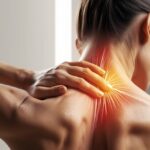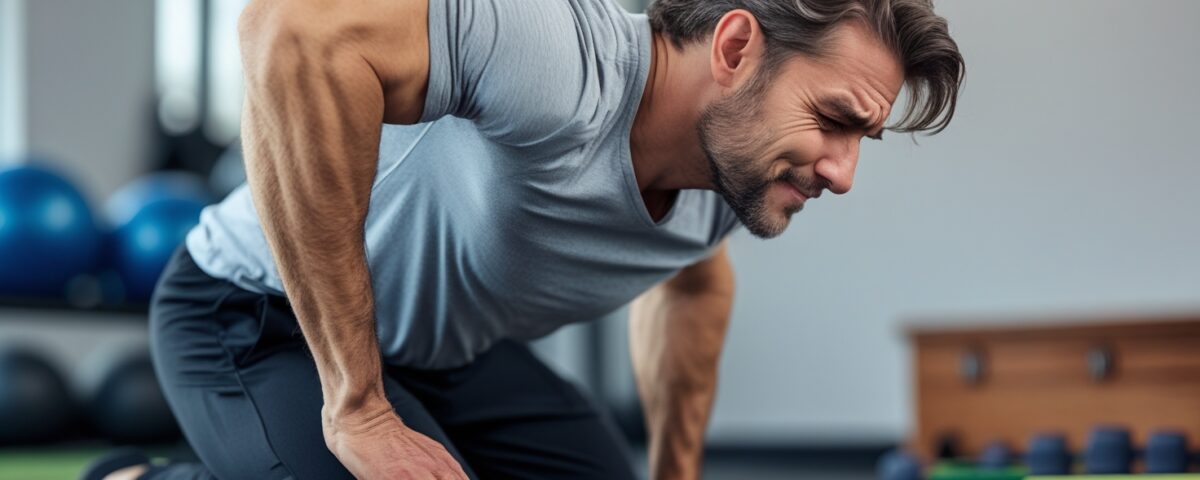
Which Ointment Really Helps with Spine Discomfort? Ranking and Tips
2025-03-07
Pain in the Lower Back Sides: What It Means and Which Treatments Provide Relief
2025-03-09Table of Contents:
-
Characteristics of Pain Above the Buttocks
-
Anatomical Structures in the Lumbosacral Area
-
Possible Causes of Pain Just Above the Buttocks
-
How to Identify Whether the Problem Is Muscular, Joint-related, or Disc-related?
-
Methods of Pain Relief and Daily Prevention
-
Exercises to Prevent Strain
-
When to See a Specialist?
-
Summary
1. Characteristics of Pain Above the Buttocks
Pain located just above the buttock line can vary in intensity, from a mild pulling sensation when bending to sharp pain when trying to straighten up. It is often referred to as "sacral pain" or "lower back pain." It frequently accompanies a feeling of "stiffness" throughout the lumbar region.
2. Anatomical Structures in the Lumbosacral Area
-
Sacrum (S1–S5) – connected to the iliac bones by the sacroiliac joints.
-
Gluteal muscles – crucial for stabilizing the pelvis and spine.
-
Lumbar muscles – including the psoas major muscle, which plays an important role in maintaining proper posture.
-
Lumbar discs – create spaces between vertebrae and provide cushioning.
3. Possible Causes of Pain Just Above the Buttocks
-
Muscular strain: improper lifting, intense strength training.
-
Sedentary lifestyle: weakened deep muscles, shortened hip flexors.
-
Sacroiliac joint inflammation: such as in rheumatic diseases.
-
Lumbar hernia: may cause pain radiating down the buttocks and legs.
-
Biomechanical disturbances: e.g., leg length discrepancy, poor posture.
4. How to Identify Whether the Problem Is Muscular, Joint-related, or Disc-related?
-
Muscular: pain intensifies with pressure and movements involving the gluteal or lumbar muscles. It eases with massage and stretching.
-
Joint-related (sacroiliac joints): pain may be localized and worsen with twisting movements of the torso, such as when getting out of bed.
-
Disc-related: often involves radiation into the leg, numbness or tingling, especially during bending or lifting objects.
If in doubt, it's advisable to consult a physiotherapist or orthopedic doctor.
5. Methods of Pain Relief and Daily Prevention
-
Rest and gradual movement: complete immobilization may worsen the situation, so try light stretching exercises.
-
Thermotherapy: warm compresses relax muscles, while cold compresses reduce inflammation.
-
Painkillers or anti-inflammatory medications: for short-term use, after consulting a pharmacist or doctor.
-
Wearing a lumbar support belt (temporarily!): helps stabilize the lumbar area during acute discomfort.
6. Exercises to Prevent Strain
-
Hip Raises (Bridge):
-
Lie on your back, feet flat on the floor, knees bent.
-
Lift your hips, tightening your glutes and abdominal muscles. Hold for 2-3 seconds, then lower your hips.
-
-
Cat-Cow Stretch:
-
Start on all fours, slowly round and straighten your spine.
-
-
Hip Flexor Stretch:
-
In a kneeling position, extend one leg forward, rest the other knee on the floor, and tilt your pelvis forward to stretch the groin area.
-
-
Plank:
-
In a forearm plank position, maintain a straight line with your body, keeping your core and glutes engaged.
-
7. When to See a Specialist?
-
If the pain lasts longer than 2-3 weeks and does not improve with home methods.
-
If there is radiating pain, numbness, or muscle weakness.
-
If the pain interferes with daily activities (walking, bending, sleeping).
A specialist (physiotherapist, orthopedic doctor) may recommend more advanced forms of rehabilitation (e.g., manual therapy, corrective exercises).
8. Summary
Pain located just above the buttocks is most often caused by musculoskeletal strain, which can be alleviated with exercises, changing habits, and occasional physiotherapy. The key is to respond quickly to the first symptoms – the earlier you act, the lower the risk of serious complications.
Take care of your lower spine – it's the foundation upon which your entire posture rests. Incorporating regular movement, mindful lifting, and maintaining proper posture can effectively prevent recurring issues in this sensitive area.
(This article does not constitute medical advice. If you have any doubts, consult a professional.)






